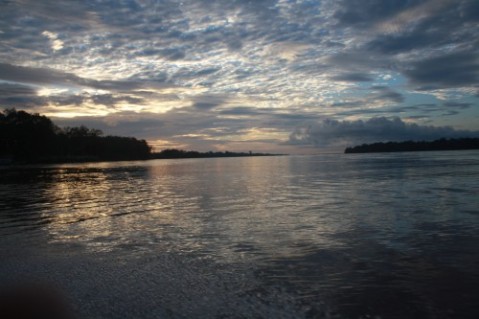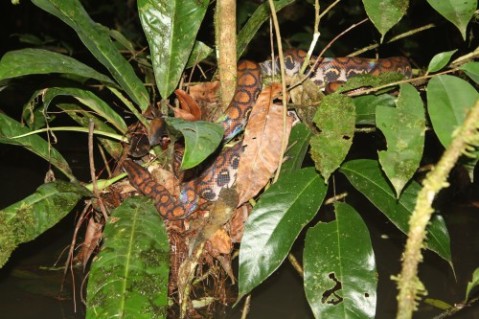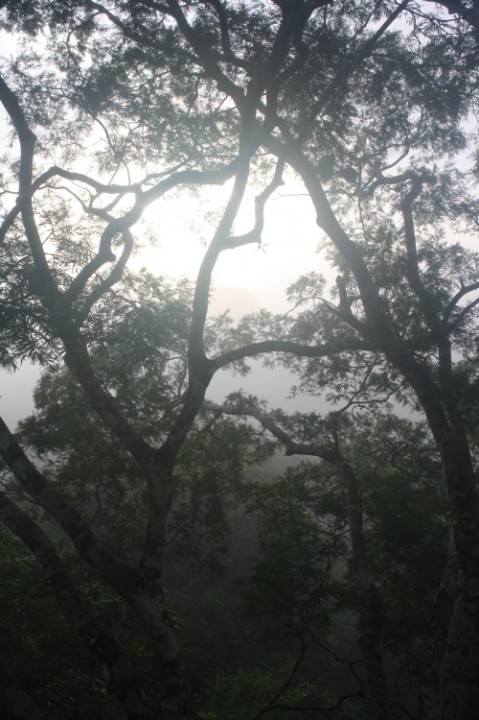A Note from ChristaD, Education and the Rainforest Editor:
This post was written by Kailini C., a high school student from the Gunston School in Maryland. Kailani is a participant in the 2015 Amazon Workshops Student Field Reporter Project which enlisted the help of several students to share their 2015 Amazon experiences with us. Over the coming months, the Education and the Rainforest posts will feature Kailani's words, photos, and reflections – giving you a student's perspective on travel to the Amazon and its educational impact!
The TSA official pawed through my luggage, sifting around dirty T-shirts and Ziplokced clothing so far beyond smelly it didn’t bear thinking about. I prayed desperately she didn’t break or confiscate the seed bracelets and colorful pottery for which I had traded with the Yagua. It would be too ironic for them to survive the journey only to be taken when we reached America again. It was somewhere around one in the morning. Exhaustion tugged at my shoulders and eyelids, and I struggled to remain alert as the official went through my gear. I had declared my baggage when we went through security because I was carrying an apple and an orange in my backpack, which doesn’t really count as agricultural products. But a traumatizing event at the airport when I was ten that resulted in the confiscation of my favorite second grade scissors has instilled in me a deep fear of customs officials. I declared just to fully ensure they wouldn’t arrest me.
I was regretting it now, though. I was tired, on the ground and missing my parents, and it was time to be home.
The official closed up my bags, removing the fruit from my pack. “These stay with me,” she said, before chucking them into the large trash can next to her checking table. She said I could leave, and as I pulled on my backpack, I looked at the can into which the perfectly good produce had disappeared. “I know some kids who would have liked those,” I murmured to myself, before setting my rolling bag on the ground and continuing my journey.
In Llachapa, back on the Amazon that was now so far away, the schoolchildren with whom we’d painted signs and built gardens would have enjoyed that apple and orange. When we ate a lunch there provided by Explorama, the apples we did not eat were given to the students. I thought about them as I walked toward the airport’s exit where the rest of the Gunston kids were waiting, and realized how different things would feel once we returned to our toilet-flushing, hot water-providing, well-fed first-world lives.
As I write this, it has been almost a week since that last day of travel, since the last day of Spanish voices and wide, wise rivers, and I am once again left to marvel at the passage of time. Already the Peru trip feels like it happened months ago. As the stress of review week, followed by exams, takes the forefront of my daily thought, I can only really go back when inhaling the scent of Guillermo’s orchid extract, and feeling again the stickiness of sweaty skin and the wild, steaming life force of the rainforest. There are parts of it I definitely do not miss–the bugs, the heat, the homesickness. But I close my eyes and remember the parts I do wish for again. The cool breeze that comes with a tropical thunderstorm and rattles the palm fronds. Lucio and Raul, with their endless stories and knowledge of the ways of the jungle. Standing on top of Platform 6 at the canopy walkway and looking over the vastness of the rainforest, surging over every horizon beneath the cathedral clouds. The ancient river and its tributaries, giving life to it all.

The River of Life
I have traveled since the age of eight, and have been to many glorious places that I even now long for. Wanderlust is like a fine wine; time just makes it stronger. When we got home at almost four on Sunday morning, there was nowhere else on earth I wanted to be. But when I woke up the next morning, my first thought was of the Amazon, and the fact that I was no longer there. Of course, the next day or two consisted of me trying to get back into my American high-schooler mindset than that of the bugbitten, eco-reporting, exhausted-but-high-on-life-and-loving-it traveler I had been for almost ten days prior. Homework and exams, when compared with saddle-backed tamarins and rainbow boas and documenting it all, now seemed pretty mundane. But I reminded myself that the work I put into my studies now would send me back there one day.

I could fill a book with all of what I learned in the Amazon; maybe someday I will. It’s certainly too much for one small blog. But the most important thing I discovered, or maybe remembered, on this trip, is that the fight for the conservation of places like the Amazon rainforest is not just one battle, fought by just one group of professionals. It is a war, fought by thousands of people all over the world who choose to make a difference one way or another. You don’t have to have a degree in botany to care about the jungle, or in anthropology to rally behind indigenous peoples, or in marine biology to love the ocean more than life itself, and recognize that these places and people are threatened and that something needs to be done. I think a lot of people do not believe they can change things because they do not know enough about the state of deforestation in the Amazon basin or the rapid depletion of the fisheries to do something about it. “I’m not a scientist, what can I do about anything,” right? But that’s not true. Buying shade-grown coffee or sustainably grown and harvested fish would make a huge difference if just half of America’s population did it, or even one person. The little changes people make are the atoms that make up the body of conservation. It’s the innovative scientists and teachers that we read the articles about, and surely, where would be without people like Rachel Carson and Sylvia Earle? But it’s the silent masses of people who do care about the environment and change the way they live accordingly that also help ensure there’s a world left to fight for.

I am immensely grateful I was able to go on this trip and learn about so much, from the awareness of the state of the rainforest to the lives of the people there, who struggle to survive as their world develops around them. For my entire life, I thought I would be a marine scientist, focusing on improving the health of the ocean I love. On this trip, I realized and accepted the fact that wars are not fought with a single weapon, and switching arms is not abandoning a cause. I can fight for change by raising awareness, by learning about peoples in threatened areas and how they live in and view their local ecosystem, and through my words and my writing and my stories. I can spread the word about the value of the rainforest and its people through tales of multicolored birds lighting up against the sky, the dances of the Yagua that seemed to reverberate to the very core of being, and the lessons learned on the shores of a goddess river, the greatest on earth, that will inspire me to teach others about the importance of our home, this colorful, wild, miraculous planet Earth.
There is nowhere in the universe I would rather be.

Christa Dillabaugh is our Education and the Rainforest Editor. A former middle school and high school science educator, she coordinates experiential field programs for educators and students in the rainforests of Central and South America. She currently serves as education director for Amazon Rainforest Workshops and loves traipsing through rainforest mud in search of teachable moments! You can read her Amazon field notes at http://amazonworkshops.wordpress.com/
Photo credits to A.Vooris, 2015
This article was originally published at https://amazonworkshops.wordpress.com/2015/06/06/miracle-spheres-and-paths-come-full-circle-lessons-learned-in-the-amazon-rainforest/
